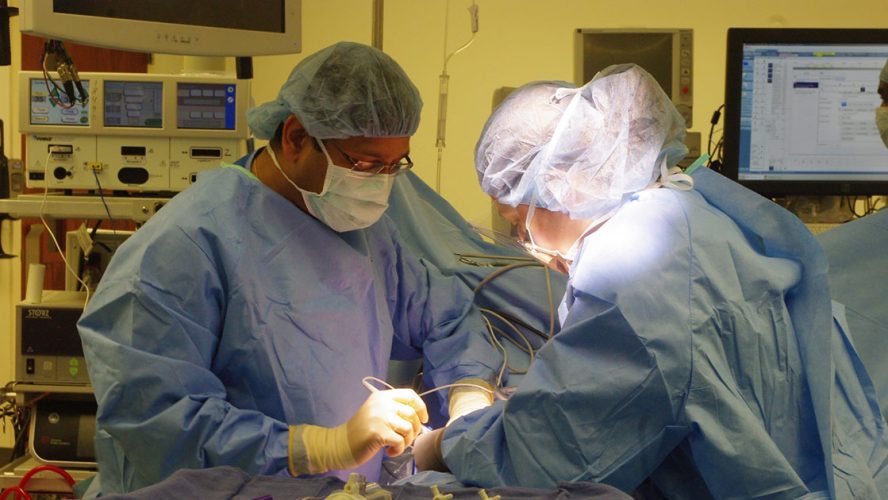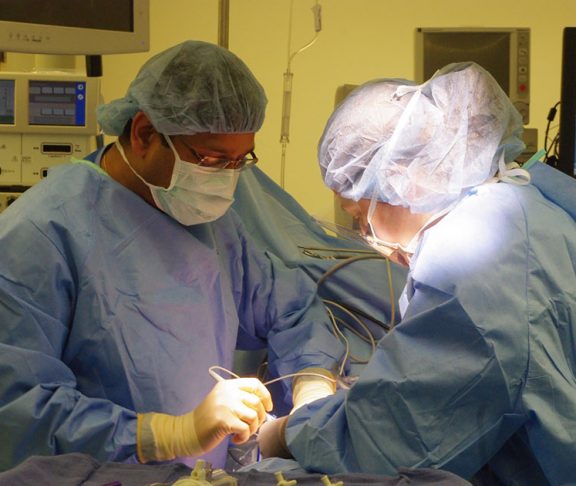For people on organ waiting lists, donors are their best hope — but a drastic shortage of organs has spurred advances in both science and education.
Every day, 20 people die waiting for an organ transplant. More than 100,000 people are on the national transplant waiting list, but only 54 percent of eligible adults are registered as donors, and only about 1 percent die in a manner making organ donation possible.
Advances in transplant science and techniques combined with a focus on education mean these discouraging numbers may be about to change.
The miseducation of donors
Chintalapati Varma, M.D., a transplant surgeon with SLUCare and SSM Health Cardinal Glennon Children’s Hospital in St. Louis, sees a lack of education as a major problem. “When someone is told they need a transplant, they go on the internet,” Dr. Varma notes. “But the internet is full of inaccurate information. A better response is to contact the nearest transplant center.”
Sherry Tenge, RN, BSN, transplant program manager and the COIIN project lead at SSM Health Saint Louis University Hospital, echoes this advice. “Do some research — I wouldn’t just go to Google. The National Kidney Foundation and the United Network for Organ Sharing have a lot of good information.”
“There are substantial educational barriers in regards to transplants and especially living donor transplants,” says Krista L. Lentine, M.D, Ph.D., medical director of living kidney donation at SLUCare and SSM Health Saint Louis University Hospital. “For example, patients with kidney failure don’t understand the dramatic improvement in survival with a transplant compared to dialysis. Five-year survival is 75 percent after transplant (85 percent with living donor), but only 40 percent for patients remaining on dialysis.”
The living donor
Living donors are increasingly vital, especially for those waiting for kidneys. “Transplant is a superior treatment,” says Tenge, “and a living donor offers the fastest time to transplant, can be timed for when the patient is healthiest and functions better because the organs aren’t damaged by procurement after death.”
But misconceptions about transplants are a major barrier to having more donors — especially living donors. “Registering to be a donor does not change your treatment in any way when you come in critically ill to the hospital,” Dr. Varma says. “And for patients, your social or financial status has no impact on how quickly you move up the list.”
Dr. Lentine points out that the science of transplantation has improved as well in recent years. “The field has advanced substantially in terms of immunosuppression; transplants from unrelated persons do just fine,” she says. “Innovations like kidney pair donations, which use algorithms that allow people to swap donors to create compatible combinations, and what’s called desensitization, which is giving treatments to remove pre-formed antibodies from patients to get more potent immunosuppression, are improving outcomes.”
Donor benefits
Dr. Varma points out that registering as a potential living donor has other benefits. “When we work up potential donors we make sure they don’t have diabetes, or hypertension or any other disease,” he says. “And the majority of these patients are also aware that by giving a kidney they need to remain healthy for the rest of their lives.”
Due to the exhaustive screening process, living donors also suffer almost no negative consequences; out of every 10,000 living donors who donate a kidney, for example, only 14 go on to develop kidney disease. And living donors don’t just save one life —they save two, moving someone off the waiting list. Organ donation is one of the purest good deeds a person can perform. For more information, go to ssmhealth.com/transplant.


